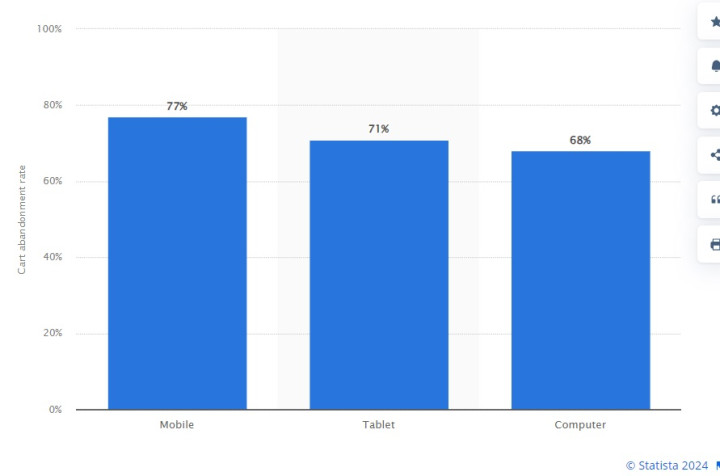Amplify your ROI - 10 Ecommerce Website Design Strategies for 2024
In the fast-paced world of ecommerce, UK businesses are continuously exploring innovative strategies to enhance their digital presence and maximise return on investment (ROI). As of the end of 2023, the UK ecommerce industry is worth $195 billion (Dash.app)
The global ecommerce market is estimating a sales growth of 9.8% in 2024, therefore the role of ecommerce website design in attracting and retaining customers has never been more critical.
DID YOU KNOW
Around 82% of the UK population uses online shopping, which amounts to nearly 54 million people (forbes.com)
Here are ten ecommerce website design tips tailored for the UK market that promise to boost your ROI.
1. Champion Minimalist Design
In the UK, where consumers value clarity and efficiency, a minimalist website design can significantly impact your ecommerce success. Opt for a clean, uncluttered layout that accentuates your products and simplifies the user journey. This not only improves site performance but also focuses the user’s attention on making purchases, thereby enhancing conversion rates.
2. Prioritise Mobile Responsiveness
With an increasing number of Britons shopping on their smartphones, a mobile-responsive design is imperative. Ensure your website offers an exceptional mobile shopping experience, with intuitive navigation and quick load times, to support the UK’s mobile-first consumer behaviour.
Devices used to access the web in the UK (forbes.com)
These are the devices used by people in the UK to access the internet:
- Smart phones - 47%
- Laptops and computers - 47%
- Tablets and related devices - 4%
- Other devices - 0.9%
3. Invest in High-Quality Imagery
British consumers have a keen eye for detail. Utilise high-resolution images and videos to showcase your products, providing a virtual touch-and-feel experience. Implement features like image zoom and 360-degree views to mimic the in-store shopping experience, thereby boosting consumer confidence and purchase likelihood.
4. Simplify the Checkout Process
A streamlined checkout process is vital to prevent cart abandonment, a common issue among UK shoppers. Minimise the steps required to purchase, offer multiple payment options, including popular UK payment methods like PayPal and Apple Pay, and ensure the security of customer data to build trust and encourage conversions.
% of baskets created but then abandoned in the UK in 4th quarter 2023, by device
5. Harness the Power of Social Proof
Incorporating customer reviews, ratings, and testimonials on your site can significantly influence purchasing decisions in the UK market. British consumers often look for validation from their peers before committing to a purchase, making social proof a powerful tool to enhance credibility and drive sales.
6. Ensure Intuitive Navigation
An easily navigable website is key to providing a positive user experience. Clear categorisation, effective search functionality, and user-friendly layouts are essential for helping UK customers find their desired products swiftly and efficiently.
DID YOU KNOW
52% of users who don’t return say the main reason is poor aesthetics (Crucible.io)
7. Apply Colour Psychology
The strategic use of colour can influence shopping behaviour. Select a palette that reflects your brand identity and encourages desired actions, such as purchasing. For the UK market, consider incorporating colours associated with trust and reliability, like blue, to resonate with local consumer sentiments.
8. Personalise the Customer Experience
Personalisation is increasingly important for UK consumers who expect tailored shopping experiences. Use data analytics to offer personalised product recommendations and content, significantly enhancing user engagement and loyalty.
9. Optimise for Speed
A fast-loading website is crucial for retaining the attention of UK shoppers and improving your site’s SEO ranking. Implement technical optimisations to ensure your ecommerce site loads quickly, reducing bounce rates and fostering a positive shopping experience.
DID YOU KNOW
42% of users will leave a website due to poor functionality and it takes 0.5 seconds for a user to form an opinion about your website's design (crucible.io)

10. Continuously Test and Evolve
The UK ecommerce landscape is dynamic, necessitating ongoing website testing and updates. Regularly experiment with design elements, from layout adjustments to CTA phrasing, to understand their impact on user behaviour. Keeping abreast of emerging design trends and technological advancements is essential to maintain a competitive edge.
By adopting these ecommerce website design strategies, UK businesses can create engaging, efficient, and user-friendly online platforms.
Focusing on delivering superior shopping experiences is key to driving sales, enhancing customer satisfaction, and ultimately, boosting ROI in 2024.

Mailchimp Alternatives Guide 2025
Is Mailchimp still the best FOR EMAIL MARKETING? Or are UK businesses find...
5 min read

The Hidden Cost of Poor System Integration
Why Poor Integration Between Systems Is Holding Your Business Back And How...
8 min read

Admin Overload: The Silent Business Killer
The cost of manual, repetitive admin tasks In countless small and medium-s...
3 min read



